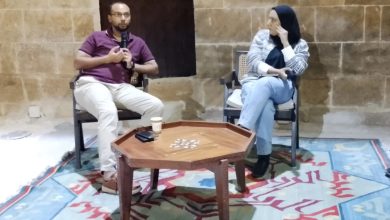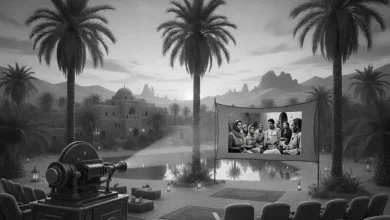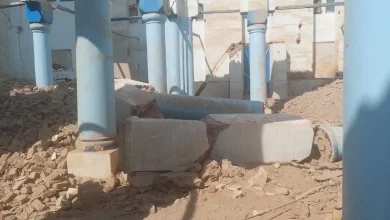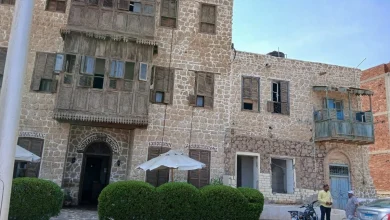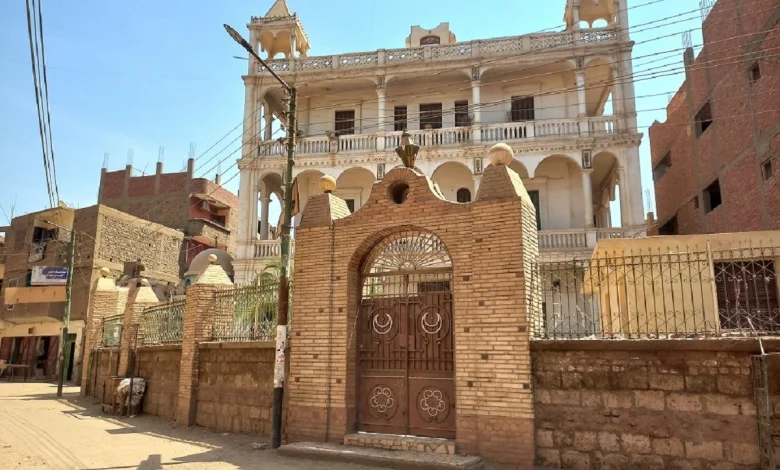
The Lost Palaces of Upper Egypt: Inside Bahgoura’s Forgotten Architectural Treasure
In the heart of Nag Hammadi, north of Qena Governorate, lies the village of Bahgoura, one of the ancient villages that still preserves its ancient architectural treasures. Its streets are adorned with a number of palaces, houses, and historic schools built in various architectural styles, including Italian, Greek, Coptic, and Islamic, most of which date back to the 19th and 20th centuries. Bab Masr takes a tour inside the village and its buildings.
From “Mahgoura” to “Bahgoura”… A village with a history
Regarding the name of the village and its transformation over time, Mahmoud Abdel Wahab Madani, Director General of Antiquities Affairs for Upper Egypt, explains: “The village was formerly known as ‘Bahu al-Janoub’ in the era of the ancient Egyptians. Then, in the 10th century, it was ravaged by a great fire, and in the 11th century, the plague spread there. This led to the death of a large number of its inhabitants, who left the village, and it became known as ‘Mahjoura’ (abandoned).”
He continues: “Over time, life returned to the village, and the name changed to ‘Bahgoura’ as it is now.” Madani emphasizes that the village still retains much of its old character despite the modern architectural developments that have appeared only on its outskirts. The old houses, streets, and mosques still stand in the heart of the original village.
Saraya Abu Taha: A German touch in the heart of Bahgoura
Saraya Abu Taha was built in the German style to tell the story of one of the village’s oldest families. Hassan Taha, 70, a grandson of the family, told Bab Masr: My grandfather worked as a contractor during the construction of the Nag Hammadi Reservoir (known as “Qanater Nag Hammadi”) in the early 20th century, alongside German engineers. After the project was completed, these engineers decided to reward him by designing a special German-style saraya for him.
He adds: “The mansion was built more than a hundred years ago in the heart of the village on a large area of land owned by the family. It was named ”Abu Taha“ after my grandfather, due to its architectural distinction and difference from the prevailing style at the time.”
He continues: “At that time, a ton of iron cost only five tariffs, but then the price rose to three saq. This forced my grandfather to settle for building only four floors. Despite the passage of time, the family has taken care to restore the mansion more than once in order to preserve the heritage left to us by our ancestors.”
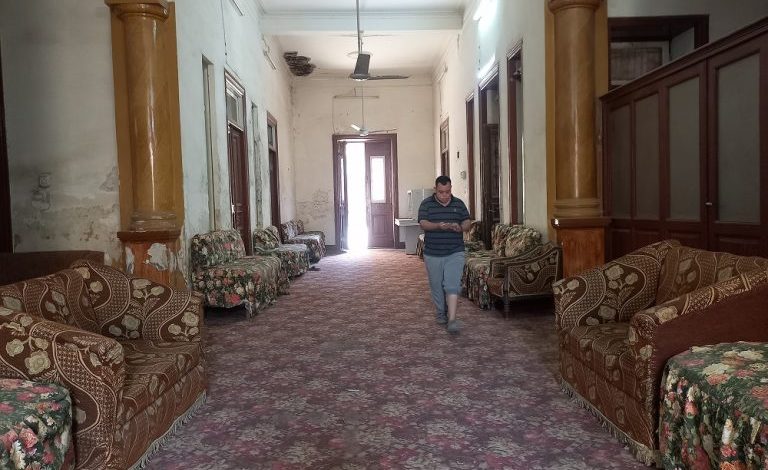
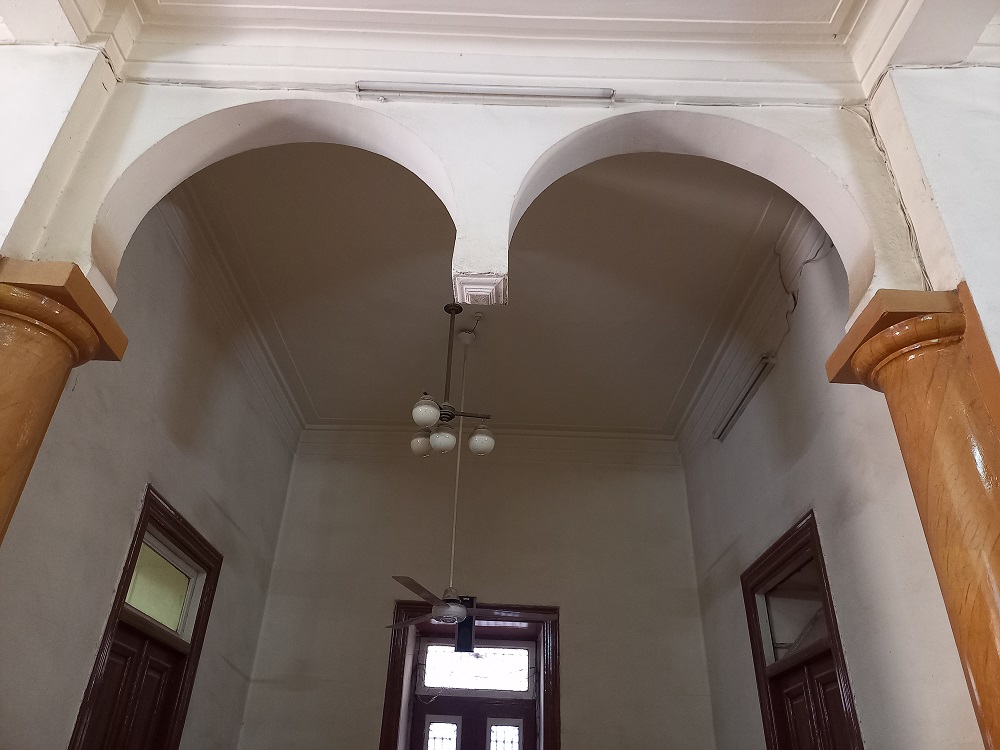
Daoud Takla: the village nobleman and patron of education
In the late 19th century, the village was home to wealthy families, including the family of Daoud Bek Takla, who owned large tracts of land. They were known for their love of science, culture, the arts, and charitable work.
Daoud Takla was born in 1859 and died in 1924. He was one of the first to introduce education to the village. He established the first primary school in the form of a palace in 1891, then a preparatory school in 1903, which was completed in 1905 to serve the children of Bahgoura and the neighboring villages. His wife and daughter continued his work, building other schools that resembled palaces in the same European architectural style.
Mounira Tekla Palace: Decorations of Angels and Children
Mahmoud Madani says of the Tekla family’s palaces: “One of the most prominent of these palaces is Mounira Tekla Palace, which dates back to the early 20th century.” It still stands today. It is characterized by its mud brick and lime mortar construction, and its wooden roof covered with “fatisa” (a mixture of straw and clay). Some of its interior walls are built in the “Baghdadli” style, which consists of wooden slats covered with a layer of plaster on the outside.
The ceilings are decorated with drawings of angels and children by artists from outside the Qena governorate, and are considered some of the rarest decorative drawings in the region. The windows are designed to prevent visibility from the outside and feature distinctive decorations. The floors are tiled with durable colored tiles to which iron filings have been added to increase their hardness. Although most of these details remain intact to this day, the palace is in a state of disrepair and in urgent need of restoration to save what remains of this unique architectural beauty.
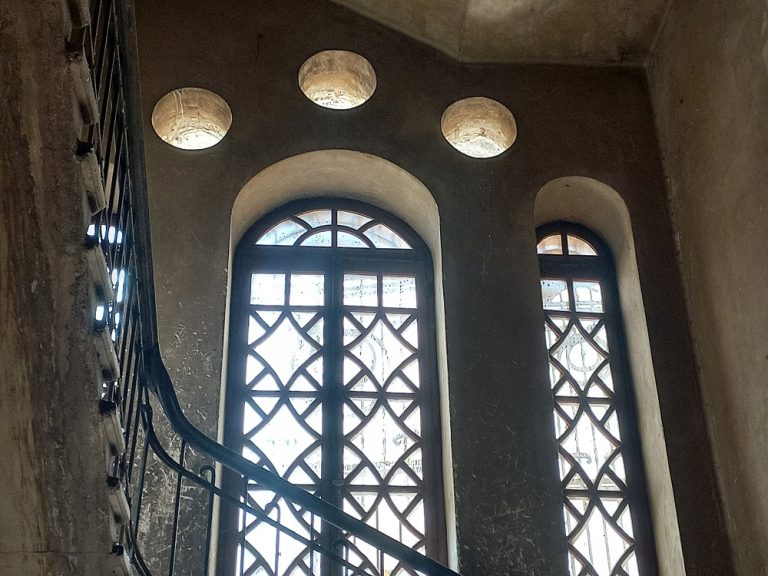
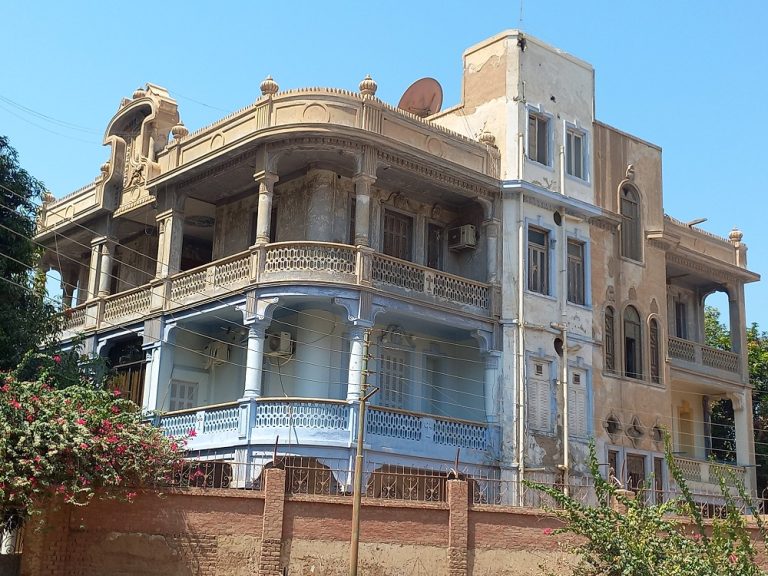
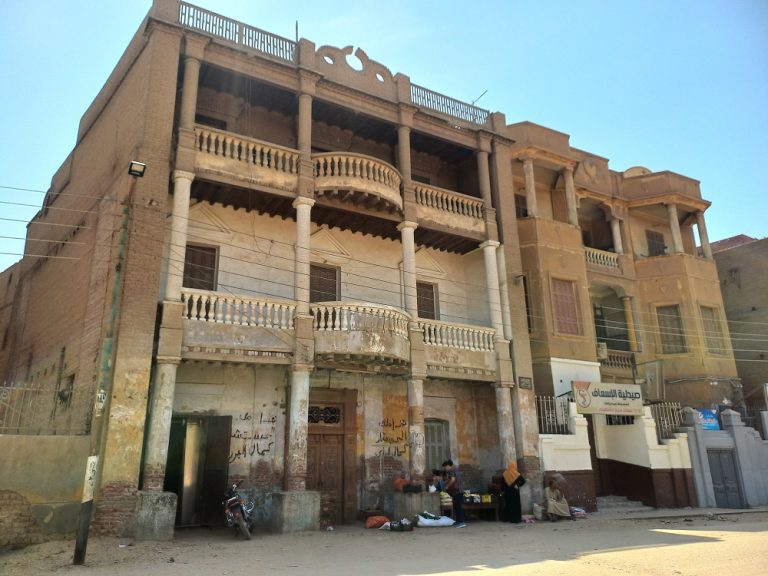
Bahgoura Palaces: When Luxury Resides at Their Heart
Madani points out that the village of Bahgoura witnessed the construction of a number of palaces and villas during a period characterized by architectural richness and cultural diversity. These buildings date back to the period between the end of the 19th century and the middle of the 20th century, when the pashas dominated the social structure of the village. They focused their attention on building luxurious and huge residences in European styles.
During that period, owners hired foreign and Egyptian engineers and architects from outside the governorate to build palaces in the Rococo and Baroque styles. They used columns topped with Corinthian capitals, one of the most complex styles of Greek architecture, They were placed in the entrances and wide facades.
These palaces were distinguished by their high walls and ornate windows of various shapes, as in the Amunreus Palace, the Abu Taha Saraya, the Daoud Tekla Palace, and the Prince’s Palace in the city of Nag Hammadi. Madani adds: “After the July 1952 revolution, no one was interested in building palaces in the European style anymore. Construction shifted toward the modern style, changing the architectural composition of most buildings.”
Social life inside the palaces
These palaces were of a style new to Egyptian architectural heritage, characterized by their spaciousness and views from more than one facade. Their lower floors were also notable for their height, accessed by climbing stairs.
Madani points out that the palaces consisted of two main sections: ” the haremlik, which was the private area for women, and the selamlik, which was a hall for receiving male guests.” In some palaces, there were double halls for large meetings and important events.
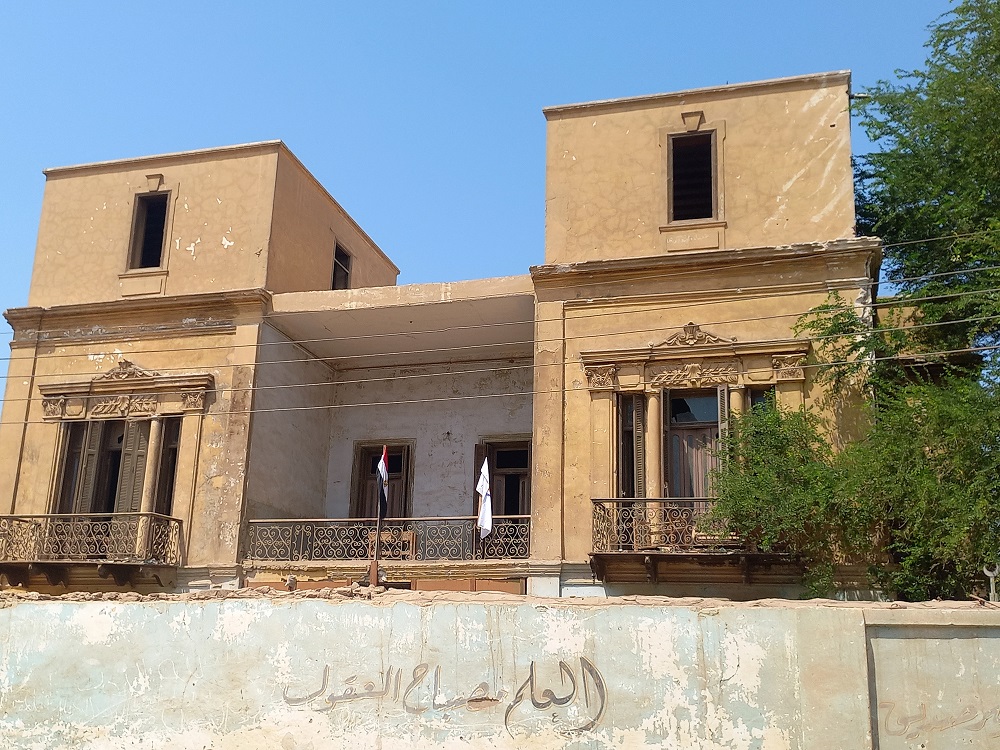

Memories of the village
Lutfi Farghali, a resident of Bahgoura village and a member of one of its prominent families, who is now over 70 years old, says: “Since I was a child, I have seen these palaces standing next to the old Umari Mosque, where we Muslims and Christians grew up together.”
He continues: Among the most prominent of these palaces are the Amonorius Palace, the Saraya Abu Taha Palace, the Daoud Takla Palace, the Omar effendi Palace in Qena, and the Prince’s Palace in Nag Hammadi. These palaces were distinguished by their spaciousness and their use of old tiles and mosaics imported from abroad, in addition to high-quality iron doors and rectangular and round colored glass windows through which one could see outside.
The ceilings of some of these palaces were made of wooden beams and planks, covered with a layer of mortar decorated with animal and human figures, as in the palaces of Al-Mounira Takla, while other ceilings were uncolored, such as those in the palaces of Amunorius and Saraya Abu Taha. He adds: “I saw the Gharbia-style gabled ceiling in the Daoud Takla Palace. But it no longer exists, as it was demolished years ago due to erosion and the passage of time.”
From luxury to oblivion
After the July 1952 revolution, with the nationalization of land and the changing structure of society, interest in this luxurious architectural style waned. Most of the wealthy left the country, and priorities shifted to simple modern construction. This led to the loss of many features of this beautiful architectural heritage. There was no longer a class with the means or desire to preserve these European styles, which were part of a distinctive architectural identity that is now disappearing.
Today, the palaces of Bahgoura stand as if trying to tell the story of a bygone era, needing someone to document and preserve them. Many of these palaces have not been registered as monuments or included in cultural heritage lists. Some of them now await an unknown fate, which may be demolition, and with it the loss of an important part of the architectural and social history of southern Egypt.

